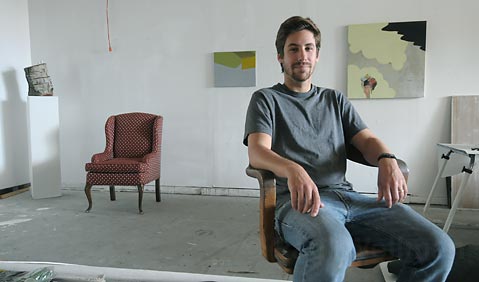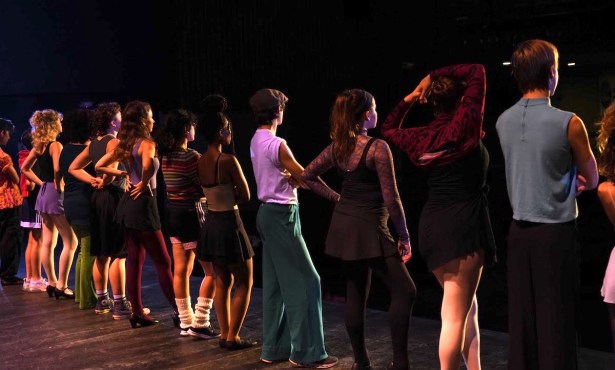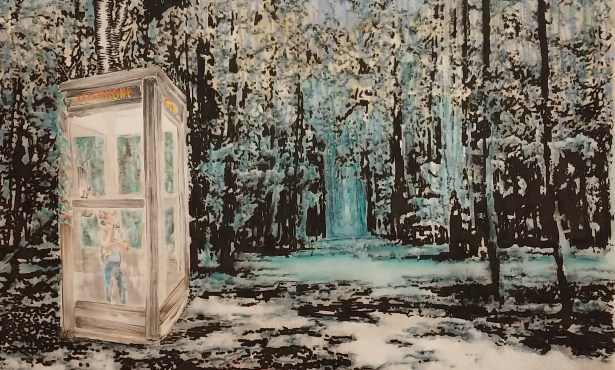Up Close With… Warren Schultheis
The Indy Profiles the Santa Barbara Contemporary Artist

On the second floor of a Funk Zone Quonset hut, beneath a curving, corrugated roof festooned with peeling paint chips, Warren Schultheis makes his artistic home. It isn’t much to look at, really: a single abstract painting hangs on an L-shaped sheetrock wall; another one is propped on the floor and wrapped in plastic. It’s as if Schultheis is trying to hide something. “I’m less interested in succeeding with art than in getting to do it when I can,” insists the 30-year-old web designer.
It takes some prompting to get him to share his work, most of which is stacked far out of sight. First, he reveals a piece made of thick sheets of Plexiglas with digital collage and cut-out patterns between the layers. Fat, worm-like forms and waving lines intersect the space in three dimensions. Next, he brings out a small acrylic painting—a field of gray with geometric blocks of mustard yellow and olive green. “This is my favorite painting ever,” he admits. “I like it because it’s unsettling. Human experience gets mucky. I’ve never been the kind of artist who wants to communicate super clearly.”
It’s a work on sanded Plexiglas that gives the best clues. Blue dots with tapered tails, like tadpoles, turn out to be pinpoints—a reference to Google maps. Much of Schultheis’s work plays with concepts of mapping and the ways we use technology to understand and control the space around us. His 2008 show at the now closed Gallery Ocho was titled Vector/No Vector; paintings from that show superimpose cartoonish tubes on an abstract landscape of green and grey hills. Like the technology they reference, these works are at once comforting and disquieting.
In college at UC Santa Cruz, Schultheis studied fine art and anthropology, and his work evidences an ongoing inquiry into the human condition. Last year he curated the show Super Santa Barbara, drawing together a group of contemporary artists to envision what our community might look like 100 years from now. One of Schultheis’s pieces from the show is a diptych of digital prints. In one half, a topographic map of the city is interrupted by a huge black cube. In the second, the cube has become a mirror, reflecting the city back at itself. Either way, it’s a dystopian vision and a subtle commentary on the way we see ourselves.
The same humility that makes it hard to get Schultheis talking drives him to serve the larger community. He founded First Fridays, a monthly art critique circle, as well as City 2.0, a website dedicated to citizen journalism. He also serves on the steering committee of the Santa Barbara Arts Collaborative. To learn more about Schultheis and his work, visit warrenschultheis.com.



